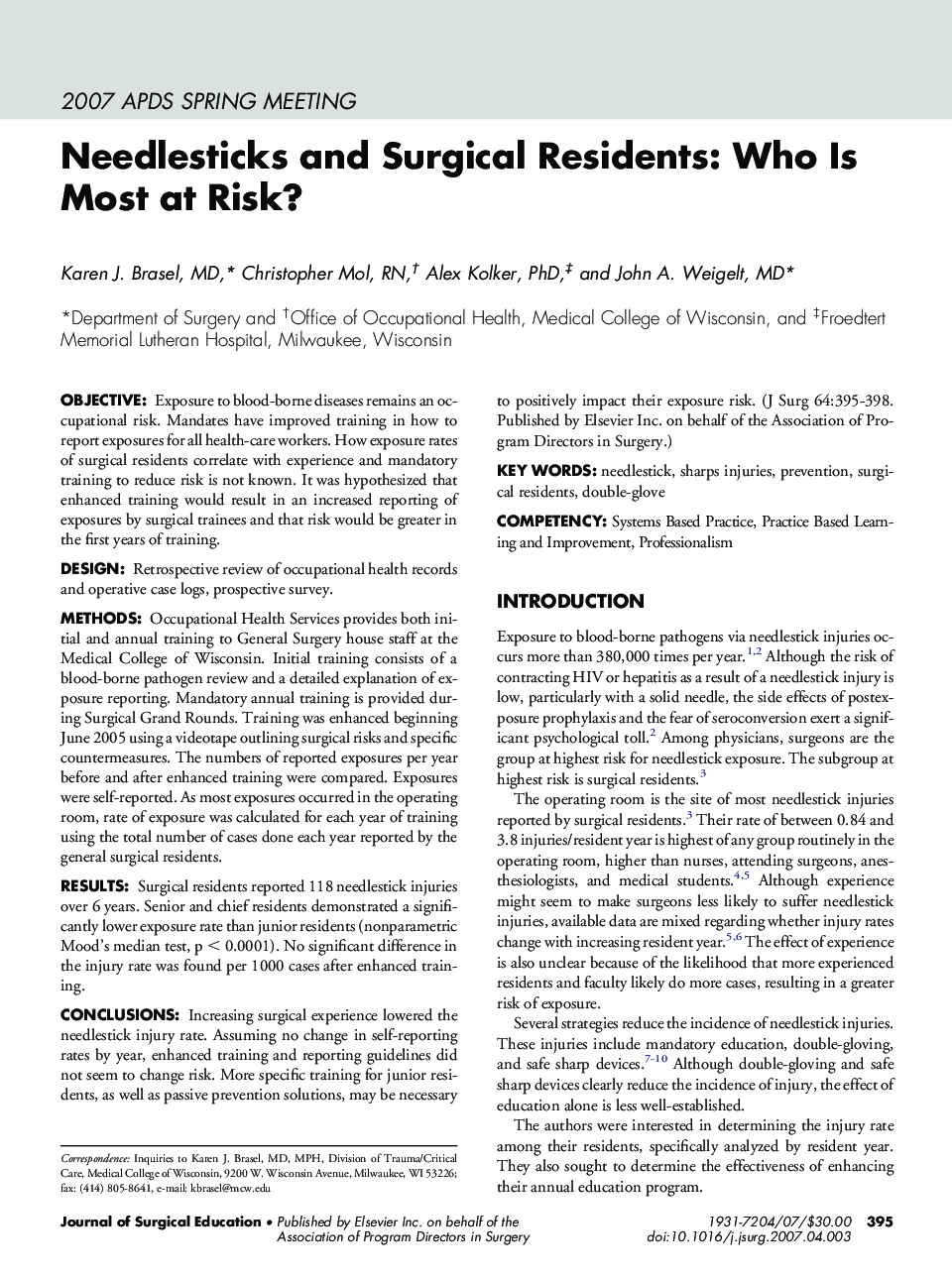| Article ID | Journal | Published Year | Pages | File Type |
|---|---|---|---|---|
| 4298841 | Journal of Surgical Education | 2007 | 4 Pages |
ObjectiveExposure to blood-borne diseases remains an occupational risk. Mandates have improved training in how to report exposures for all health-care workers. How exposure rates of surgical residents correlate with experience and mandatory training to reduce risk is not known. It was hypothesized that enhanced training would result in an increased reporting of exposures by surgical trainees and that risk would be greater in the first years of training.DesignRetrospective review of occupational health records and operative case logs, prospective survey.MethodsOccupational Health Services provides both initial and annual training to General Surgery house staff at the Medical College of Wisconsin. Initial training consists of a blood-borne pathogen review and a detailed explanation of exposure reporting. Mandatory annual training is provided during Surgical Grand Rounds. Training was enhanced beginning June 2005 using a videotape outlining surgical risks and specific countermeasures. The numbers of reported exposures per year before and after enhanced training were compared. Exposures were self-reported. As most exposures occurred in the operating room, rate of exposure was calculated for each year of training using the total number of cases done each year reported by the general surgical residents.ResultsSurgical residents reported 118 needlestick injuries over 6 years. Senior and chief residents demonstrated a significantly lower exposure rate than junior residents (nonparametric Mood’s median test, p < 0.0001). No significant difference in the injury rate was found per 1000 cases after enhanced training.ConclusionsIncreasing surgical experience lowered the needlestick injury rate. Assuming no change in self-reporting rates by year, enhanced training and reporting guidelines did not seem to change risk. More specific training for junior residents, as well as passive prevention solutions, may be necessary to positively impact their exposure risk.
